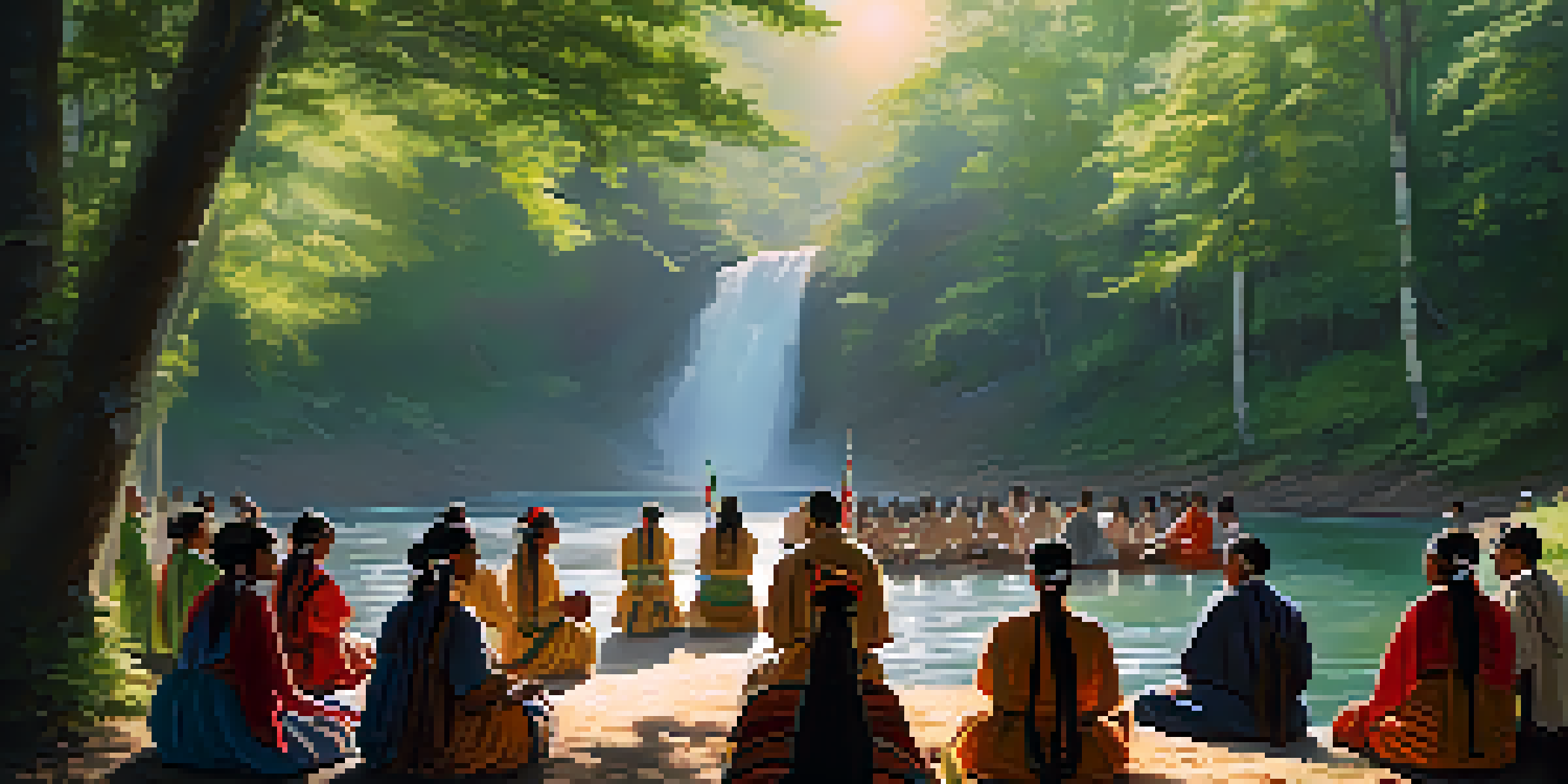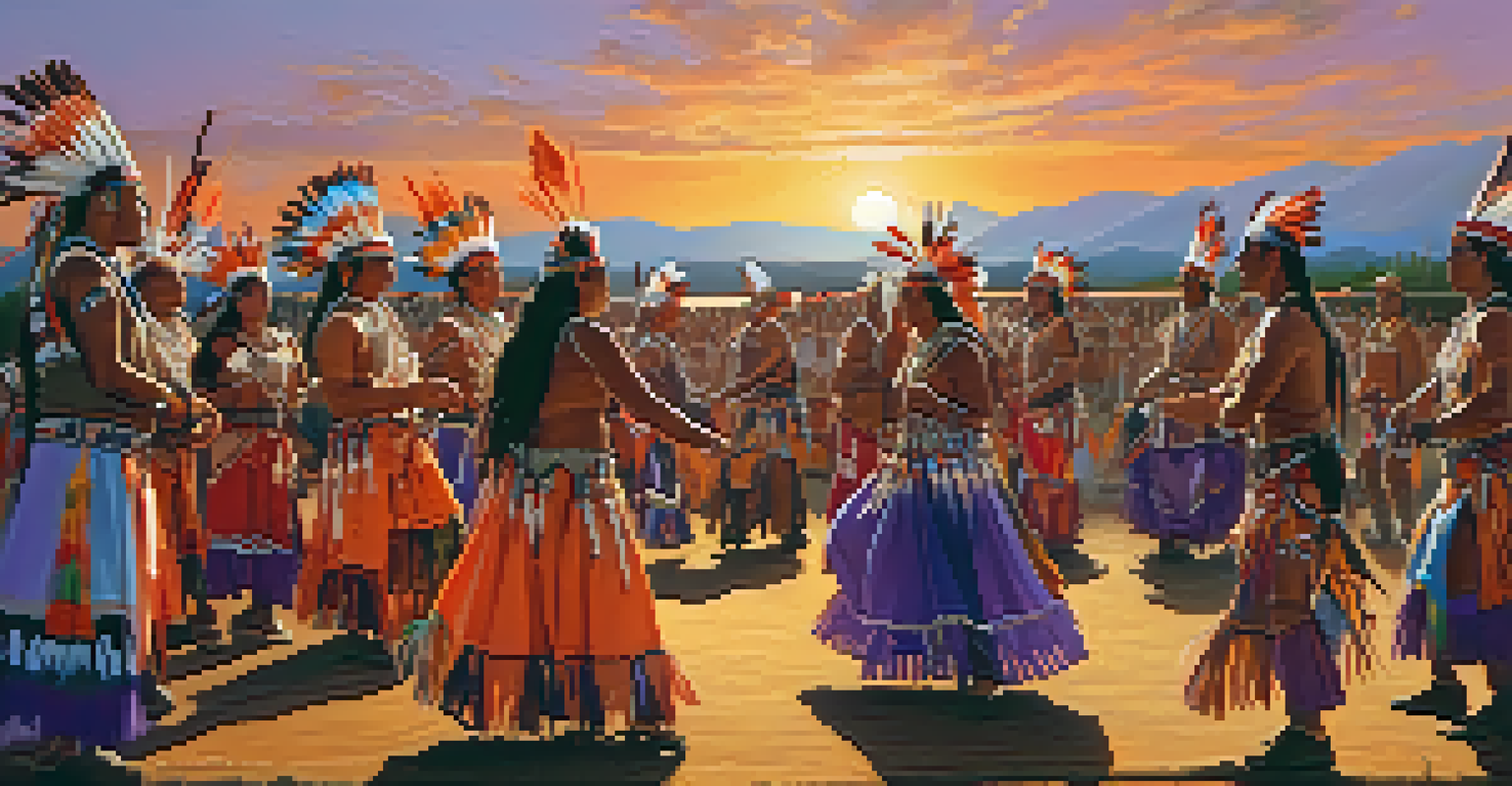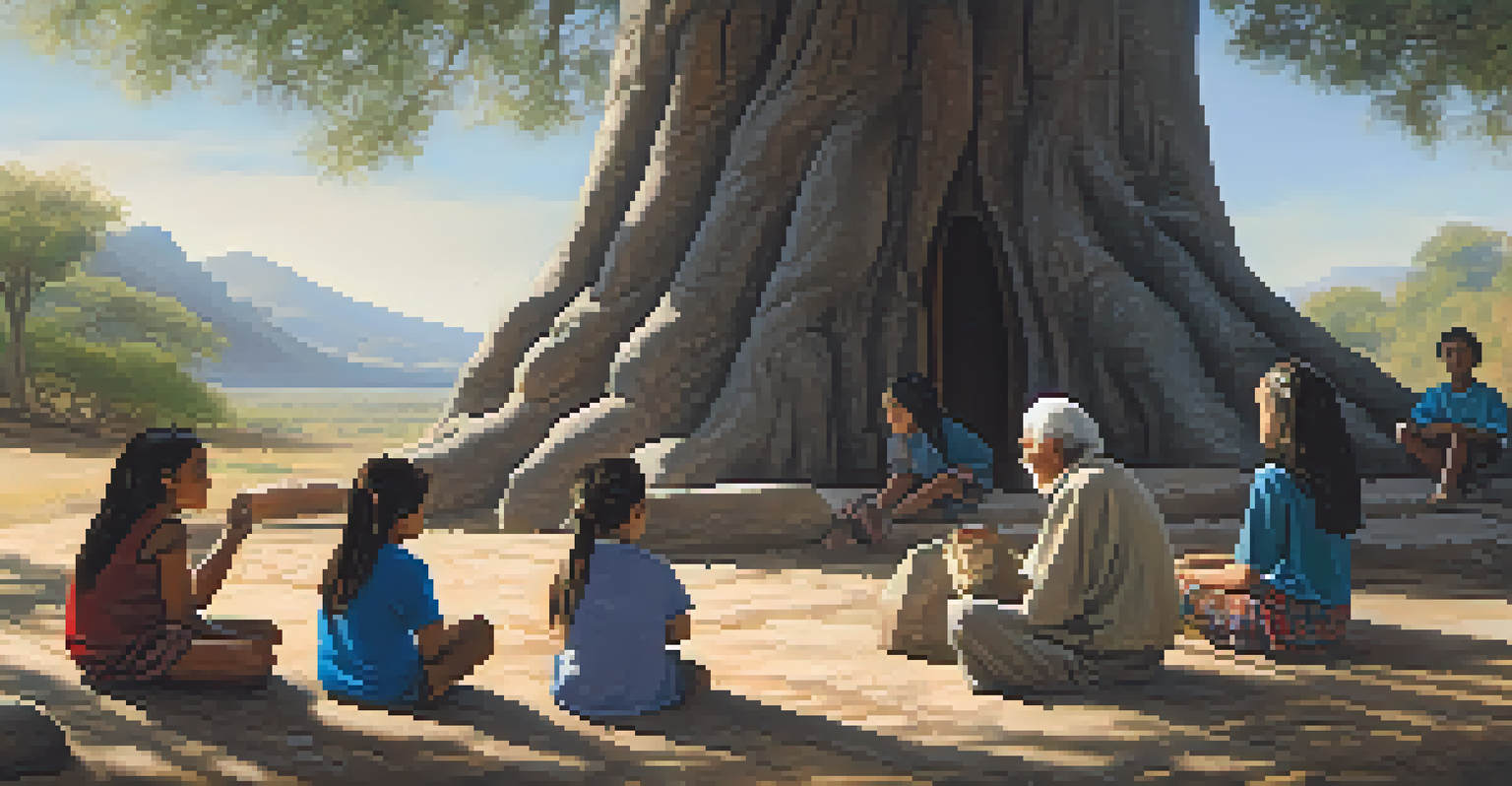Cultural Context: Set and Setting in Indigenous Practices

The Significance of Set and Setting in Indigenous Cultures
Understanding set and setting is crucial when engaging with Indigenous practices. These terms refer to the physical and social environments that influence experiences and outcomes during rituals or ceremonies. For Indigenous peoples, the context can shape spiritual experiences significantly, emphasizing the interconnectedness of people, place, and purpose.
The land is not just a backdrop for our existence; it is a living, breathing entity that shapes our very being.
In many Indigenous traditions, the natural landscape is not just a backdrop, but an integral part of the experience. For instance, a ceremony performed by a river carries different meanings and energies than the same ceremony conducted in a forest. This shows how the physical setting can enhance spiritual connections and deepen understanding.
Moreover, the social environment—who is present, the relationships between participants, and shared histories—also plays a vital role. When participants share a common purpose and respect for the surroundings, the experience can be transformative, fostering a sense of community and belonging.
How Place Shapes Indigenous Spiritual Practices
Place is more than just a location in Indigenous practices; it's a character in the story of spirituality. Each landscape, whether it be a mountain, river, or sacred site, is often imbued with cultural significance and ancestral stories. This connection to land helps preserve traditions and teaches younger generations about their heritage.

For example, many Indigenous groups have specific sites that are deemed sacred, where rituals are performed to honor ancestors or the earth. These places are often chosen for their historical and spiritual importance, reinforcing the belief that every spot on Earth holds a story and a lesson.
Importance of Set and Setting
Set and setting significantly influence Indigenous spiritual experiences, highlighting the deep connection between people, place, and purpose.
This understanding of place emphasizes that spiritual practices are deeply rooted in the physical world, creating a rich tapestry of meaning that goes beyond mere rituals. It also highlights the importance of environmental stewardship, as caring for these places is a way of honoring the traditions and ancestors.
The Role of Community in Indigenous Ceremonies
Community plays a fundamental role in Indigenous ceremonies, reinforcing the idea that these practices are not solitary experiences. When individuals come together for a shared purpose, the collective energy can amplify the spiritual experience. This sense of unity fosters a deeper connection not only with each other but also with the land and the spirits involved.
To be a part of the community means to understand the places we inhabit and to honor the stories they hold.
For instance, in a powwow, the gathering of dancers, drummers, and spectators creates a vibrant atmosphere that uplifts and celebrates Indigenous culture. The communal aspect allows for the sharing of stories, songs, and traditions, making the event a living history lesson for all involved.
Additionally, the presence of elders and knowledge keepers within the community is vital. They often guide the ceremonies, imparting wisdom and ensuring that the practices are conducted with respect and authenticity, thereby strengthening the bonds of community and culture.
Cultural Relativity: Understanding Different Perspectives
Cultural relativity encourages us to view Indigenous practices through the lens of their unique cultural contexts. This means acknowledging that practices that may seem unusual or foreign to outsiders carry deep meanings within their own cultures. Understanding these perspectives can foster respect and appreciation for Indigenous traditions.
For example, a ceremony involving the use of sacred plants may be viewed differently by those outside the culture. To Indigenous peoples, these plants are often considered allies or teachers, integral to their spiritual and physical well-being. Recognizing this perspective challenges us to move beyond our biases and assumptions.
Role of Community in Rituals
Community involvement in Indigenous ceremonies enhances spiritual experiences and fosters unity, emphasizing the collective nature of these practices.
By engaging with Indigenous practices through cultural relativity, we can begin to grasp the significance of set and setting. It allows for a more nuanced appreciation of how these elements shape experiences and the importance of honoring these practices as they are understood within their own cultural frameworks.
Rituals: The Intersection of Time and Space
Rituals in Indigenous cultures are often seen as a bridge between the past, present, and future, intertwining time and space in meaningful ways. These practices frequently draw on ancestral knowledge while also adapting to contemporary contexts, demonstrating resilience and continuity. The setting for these rituals is meticulously chosen to reflect this interconnectedness.
For instance, a seasonal celebration might take place at a specific site that holds historical significance, linking present participants with their ancestors. This connection reinforces the idea that time is cyclical and that honoring the past is vital for the present and future.
In this way, rituals serve not only as spiritual practices but also as educational experiences. They help participants understand their place within a larger narrative, emphasizing the importance of maintaining these traditions across generations.
The Impact of Modernization on Indigenous Practices
Modernization poses both challenges and opportunities for Indigenous practices, particularly concerning set and setting. As urbanization and globalization spread, many Indigenous communities find themselves navigating the tension between preserving traditional ways and adapting to contemporary life. This can lead to a re-evaluation of how rituals are conducted and where they take place.
For example, some ceremonies that once occurred in sacred natural spaces may now be held in community centers or urban parks. While these settings can still foster connection, they may lack the spiritual resonance of traditional locations. This shift highlights the importance of creatively adapting while honoring the essence of the practices.
Challenges of Modernization
Modernization presents challenges and opportunities for Indigenous practices, prompting a delicate balance between adaptation and the preservation of cultural heritage.
However, modernization can also provide platforms for Indigenous voices to be heard. Digital spaces, social media, and community gatherings allow for the sharing of practices and stories, enabling a global audience to appreciate these traditions. The key lies in finding a balance between adaptation and preservation, ensuring that the cultural heritage remains vibrant and relevant.
Preserving Indigenous Practices in a Globalized World
As our world becomes increasingly interconnected, the preservation of Indigenous practices is more important than ever. Globalization can threaten cultural identities, but it also offers opportunities for Indigenous communities to share their stories and traditions. By understanding the concepts of set and setting, we can better appreciate the nuances of these practices and their significance.
Educational initiatives, cultural exchanges, and community-led projects can help sustain Indigenous practices while fostering respect and understanding among diverse audiences. Engaging with Indigenous peoples as active participants in sharing their cultures is essential, allowing their voices to lead the narrative.

Ultimately, preserving Indigenous practices requires a commitment to honoring their cultural contexts. This means recognizing the importance of set and setting, both in physical spaces and social environments, as we work together to ensure that these traditions continue to thrive for future generations.